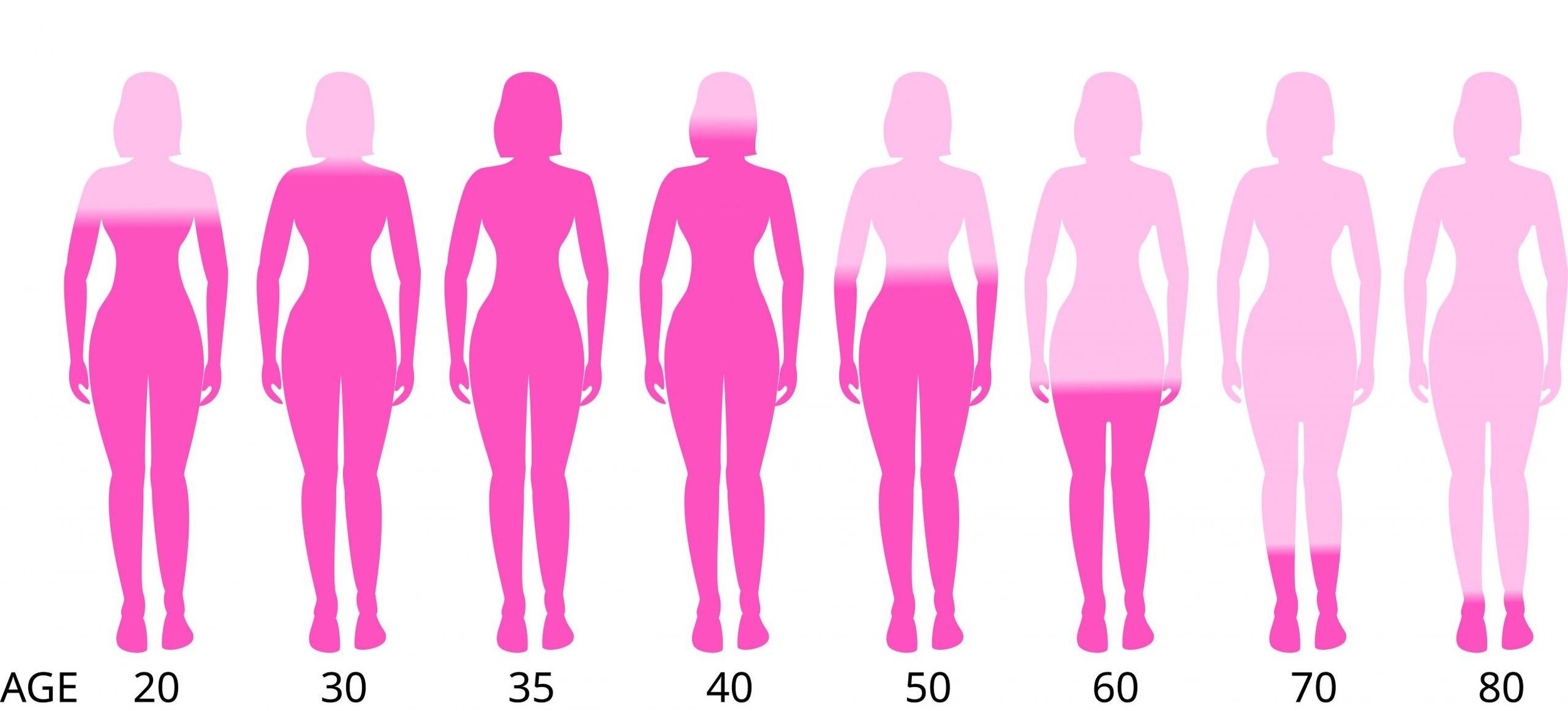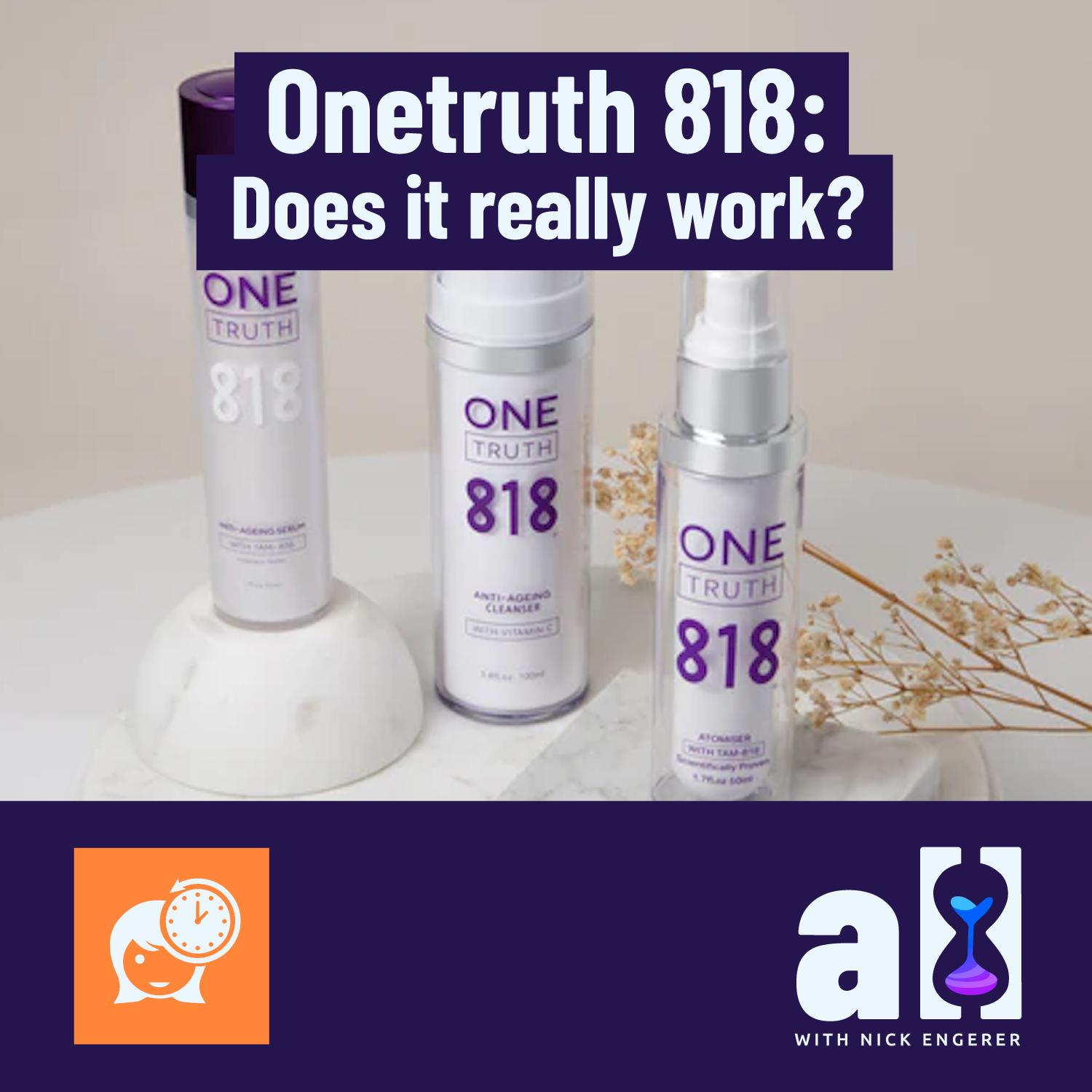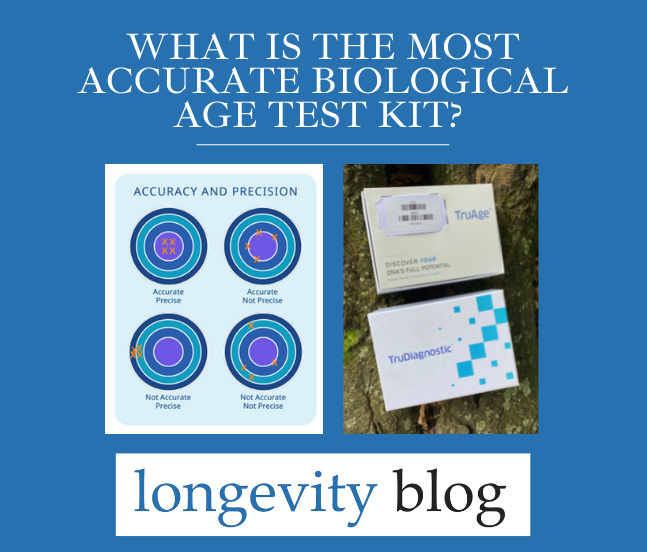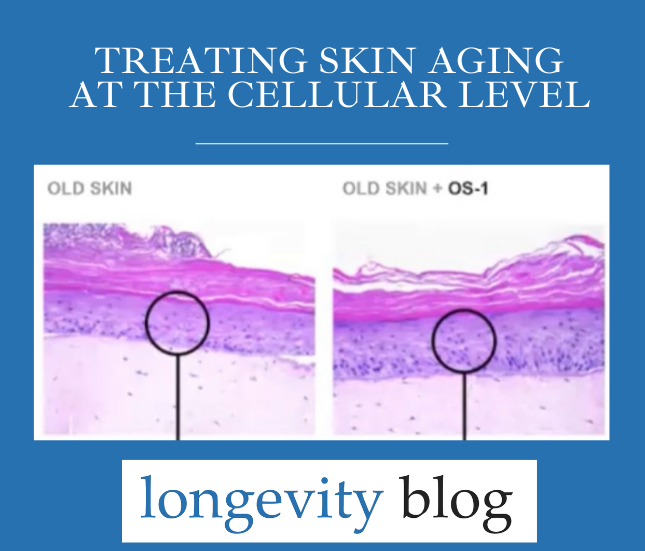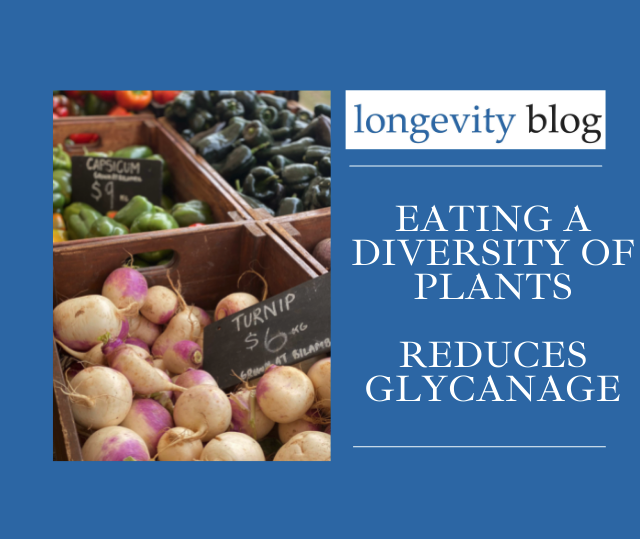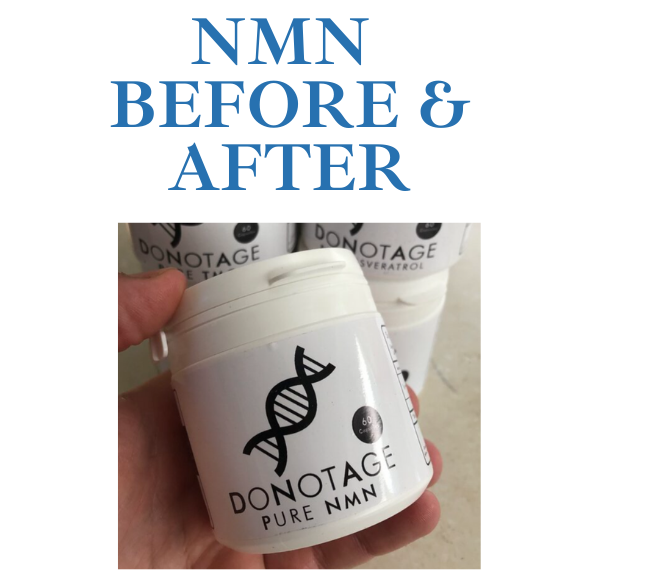How GlycanAge Biological Age Testing Works - An Interview with Glycan Expert Gordan Lauc
Glycans Can Be Used to Estimate Biological Age
In our most recent post, we explored the basics behind biological age testing with glycans.
Working up from the basics (what are glycans?) through to how glycans interact with inflammation in the body, and ultimately are a signal of the aging process itself.
We also heard from Nikolina Lauc, CEO at GlycanAge, a longevity technology company based in the United Kingdom, whose mission is to “bring glycoscience into the hands of both clinicians and consumers to inform, guide and preserve your future health”.
GlycanAge has recently made it possible to purchase a direct to consumer kit to assess your ‘glycome’, which as we will learn in this follow-up post, is a powerful indicator of your future health and longevity.
Today, we’re publishing an exclusive interview with glycan expert and GlycanAge Director Gordan Lauc.
Gordan is not just a glycan expert, he is THE global authority on all things glycans.
As a Professor of Biochemistry and Molecular Biology at the University of Zagreb, he kicked off the Human Glycome Project in 2017 and has built the world’s largest human glycome database.
Through this effort, he has built an entire research team who have pioneered the glycomic analysis technology required to inspect glycans quickly and efficiently.
It is this technology which has made consumer testing of biological age and personal health status through glycans possible.
Our interview subject, and global glycan leader, Professor Gordan Lauc.
While an impressive figure of great reputation, Gordan is also a great conversationalist, amateur gardener and all around collaborative and friendly bloke who is passionate about helping people lead healthier lives.
Through collaboration with GlycanAge, we sat down with Gordan for a 1-on-1 interview, diving into the details behind how the human glycome works, and how to use it to assess biological age.
We even documented Gordan’s input on how you can run your own self-experiment with GlycanAge, to improve your health and overall longevity.
Let’s get into it!
GlycanAge Discount Code!
As a part of our mission, we are working to make your longevity budget stretch further!
Through our collaboration with GlycanAge, we have a 15% off coupon code, which you can use on their biological age test kits.
Use the code “longevityblog” to save 15% on GlycanAge
This interview was conducted on 20 May 2021, over Zoom and is an audio transcript with minor edits for clarity, brevity and correctness.
Screen capture from Gordan’s YouTube video where he briefly tours his state of the art glycan laboratory.
How does the GlycanAge test work?
Longevity Blog (LB): Gordan. We recently checked out a video that is uploaded to YouTube. It was from an Instagram Live video with longevity doctor. Dr Joseph Raffaele.
In this video, you briefly toured your glycan laboratory. We found that absolutely fascinating.
You had a few generations of machines that were in place, and it made us naturally quite curious.
Could you explain what happens when a GlycanAge sample comes into your lab?
Tell us about the process of going from blood sample to glycan analysis!
Gordan Lauc (GL): Glycans are very complicated molecules. You cannot just read the letters in the way you read DNA or protein, they're branched. They're chemically very similar, but in the same way very diverse. Analyzing glycans is a challenge. This is why we need so many fancy machines.
When we do the GlycanAge test, it focuses on the glycan immunoglobulins. First, we have to fish out immunoglobulins (IGG) from the blood sample (a dried blood stain collected by fingerprick),
We have a special technology to get just IGG out of all other proteins in the sample. From the IGG, we remove the glycans, using a special enzyme which acts like a pair of scissors. It removes the one group of glycans called N glycans from the IGG.
After this, we have to dye them to make them visible in our machines. These machines use capillary electrophoresis, or chromatography, which separates glycans based on their chemical structure. Then we quantify the amount of each of them.
For the GlycanAge, we focus on glycans which change with age.
LB: There's around 2,000 to 3,000 types of glycans, is that right?
GL: When we talk about the total 'glycome', there are approximately 2000 different glycan blocks. For IGG, there are 24 major structures, so this “fishing out” process of the immunoglobulin reduces the number of glycans significantly. Using these individual structures we calculate the changes which happen with age.
Biological Aging and Glycan Immunoglobulins
Pictured: A 3D model of an human immunoglobulin
LB: In this biological age analysis, there is a close link between the IGG N glycans you're analysing as age markers and inflammation.
Can you can you explain that connection between these immunoglobulins and inflammation in the body.
GL: Immunoglobulins are the main weapons of our immune system. They are made to recognize any foreign object (bacteria, virus food, any foreign molecules) which comes into the body. They do this by a relatively complex genetic process to make a hypervariable domain to bind to this foreign object.
LB: A complex process certainly - give us the simplified explanation.
GL: When antibodies are developed, they do not know whether a given foreign object will be an enemy, like a bacteria or a virus, or if it is friendly, such as food or a dust or something else they should ignore.
After the antibody binds to this foreign object, what happens next is determined by glycans. This very complicated process (glycosylation) is regulated by least 40 different genes. These glycans decide whether antibody will kill a target cell (activate inflammation) or will it suppress inflammation.
Inflammation and Glycans
LB: And it is this increasing level of inflammation across the body which is tied to aging. What does a youthful version of this process look like?
GL: What we see in young people is that the majority of immunoglobulins have these anti inflammatory glycans. But when there is an attack by a foreign invader, like a bacteria or virus, then you need inflammation.
The problem is that as we live longer. We are genetically not made to live over 40. Once you stop making children, your genes don't work for you anymore, they work against you!
As we're getting older, this process gets disturbed, and immunoglobulins become more and more pro inflammatory. And actually, what we are measuring in the GlycaAge test are these molecules which regulate inflammation.
GlycanAge Biological Age Estimate
LB: This is how you can produce a biological age estimate, right? If you know what the glycome of an old person would look like versus a young one, you can make a prediction. Talk about how you create a biological age assessment using this information?
Pictured: A GlycanAge biological age testing kit. We discussed some of the basics on these kits in a recent post.
GL: Initially when we developed the DNA typing, we noticed that glycans correlate with age. At the time, we were thinking to use this information to determine the age of a person who left a blood stain at a crime scene.
This is relevant information for police investigation, whether this was a young guy or experienced criminal.
We tried to correlate the glycans with chronological age, and this was reasonably successful.
When we did this, approximately a decade ago, this was one of the most accurate ways to determine the chronological age of a person. Subsequently methylation test was developed, which was way more accurate in predicting chronological age.
LB: But there is still unique value in the GlycanAge test, particularly in assessing lifestyle factors?
GL: What we have learned is that our test deviates from the chronological age, approximately nine years. But not in a random way! But in a way which associates with lifestyle.
On our GlycanAge test, people living healthy lifestyle will always be younger, while people living an unhealthy lifestyle will be older. Also, people with different diseases will generally look older too.
What is Biological Age?
GL: We realized that the GlycanAge is not a good test of chronological age, so we can't use it in forensics, but it is very informative about something we call biological age. Although biological age is a very tricky word, because there is no golden standard.
Learn more about assessing your biological age in our interview with Chronomics CSO Dani
There is no universal unit of measure of biological age. And so someone can give you any kind of number and you cannot say whether it's right or wrong.
LB: Let us ask you about that, Gordan. What do you think about this term biological age? Is “age” the right term? Or is it more of a “biological score” or a “health score”?
Why do you think the industry has chosen the term “biological age”? It sounds nice. But we’re hearing from you that that term is a bit squishy.
What Health Information Does GlycanAge Provide?
An example of the ‘indices’ for the G0 (top) and G2 (bottom) IGG glycans. A GlycanAge test gives you access to this information as well as your biological age.
GL: When we do research, we report 24 directly measured glycans and maybe additional 50 different scores.
But the problem is that this is too complicated for people to understand. So then we made two levels of simplification.
One level is that we have three key indexes or scores, which is G0, G2, and GS.
G0 are glycans without galactose, which are the most proinflammatory.
G2 are glycans with two galactoses, which are suppressing inflammation.
GS are glycans with sialic acid, which also suppress inflammation.
LB: These three indices are reported to users when they complete the GlycanAge test.
This ‘first level’ of simplification provides direct insight into the levels of inflammation driven by or suppressed by each group.
How are these indices useful for the user?
GL: These three indexes are something which one can use to quantify three different aspects of regulation of inflammation. These three indices are exactly measured from the blood sample. This means, anybody in the world who has the right equipment can take the same blood sample and they should get the similar number.
LB: From there, biological age is the next level of simplification?
GL: The ultimate simplification is the biological age, but that's just the name, you can also call it a score. This is the model number. It is not a number which has an absolute meaning.
Screenshot from one of Gordan’s presentations on the GlycanAge biological age clock. Source: YouTube and also this pubmed article.
However, we know that the higher biological age number means more inflammatory glycans, and that means more low grade chronic inflammation.
This chronic inflammation is something which happens with aging and with disease. A smaller number of the GlycanAge means more immune suppressive glycans, less low grade chronic inflammation.
This is a number which is modeled. We use 1000s of people (over 150k) to build a model and compare an individual to this model to determine their GlycanAge.
Of course, it's not absolutely “accurate”, because there is no golden standard of accuracy. But what makes GlycanAge different from other indexes of biological age, which are being used is that we know that glycans which we measure are functional effectors of inflammation. They're molecules which do the damage.
Improving Your GlycanAge Biological Age
LB: Gordan - let's talk about improving our biological age. In other interviews, we've heard you talk about four key factors: sleep, diet, exercise, and managing stress. Making postiive changes in these lifestyle can help change the glycan based biological age estimate.
Can you can you explain why that's the case? Why are those four factors driving the GlycanAge?
GL: These four factors are the key factors of healthy life. Now, we all know, we need enough sleep, we need healthy diet, we need a moderate amount of exercise, and we don't need too much stress. There is no magic in that.
The problem is that this is extremely difficult. We cannot do it all. It simply is not possible in a modern society.
Could GlycanAge testing help identify the most optimal diet for YOU?
The other important thing is that we are all very different. The more research we do, we are learning this.
For example, we did recently cohort of 1000 people on five different diets. And each diet is good for somebody and bad for somebody else, so there is no universal diet, which will help everybody.
LB: Fascinating! Could you share what some of those diets were?
GL: This is still unpublished. I cannot go into details. This was a large European project. But these diets were generally high and low protein and high and low glycemic index and different combinations.
High glycemic index is not bad for some people. It is bad for perhaps most people, but some people cope with glucose better than others.
What we are hoping that the GlycanAge can do is help people to focus on one of the four aspects which is dominant in them.
Gordan is actively collaborating with Dr Joseph Raffaele to explore using GlycanAge on his patients at his longevity clinic in New York. Image Source: LinkedIn
For example, for some people, it could be only a few extra hours of sleep, and then they don't have to spend an hour day in a gym.
For other people, it could be just less carbohydrates. And then maybe they don't have to sleep that much.
GlycanAge is a kind of objective tool to evaluate what works and what does not work for us.
You earlier mentioned this Instagram Live video Dr Raffaele and I did. He has an anti aging clinic in New York where they are testing these ideas.
GlycanAge and Hormone Optimisation
LB: Let's talk about that. Dr Raffaele specifically talks about hormone optimisation.
We know that there's a real strong relationship between hormone balance in women, for example, and menopause and perimenopause.
Research with GlycanAge is finding a close link in aging and hormone levels. You also just mentioned diet.
So here’s our next question: How do we create understanding on what an individual needs in terms of their own personalised approach to improving their GlycanAge?
GL: This is exactly what we're trying to do at the moment. We started to work with Joseph to test his patients, and they all turned out younger. His average patient is 20 years younger, for male and I think 15 for a female patient, which is unbelievable.
Estrogen levels change significantly over the course of a woman’s life. GlycanAge is closely correlated with these changes.
I asked him - what are you doing to your patients? What are you giving to them? He's giving them more or less everything one can do.
We decided to dissect what works in which patient, and are now trying to do proper, placebo controlled randomized trials to see which of the approaches work.
What we know is that estrogen is a very dominant factor in woman.
We had, we got samples from one very interesting study where menopause was chemically induced in young women. In a half of the group, the estrogen was returned with estrogen patch, and the other half of the woman received a placebo.
Estrogen supplementation completely prevented the change in the IGG glycome while the woman who were on placebo aged nine years in a few months on average. Some women going through menopause age as much as 20 - 30 years within a year (on average, this number is only 7-9 years)
This loss of estrogen is extremely strong regulator of IGG glycosylation. The problem is when these women lose their good glycans, its promoting low grade chronic inflammation.
We know for example, from animal models that this is causative of hypertension. The increased risk of cardiovascular diseases known to occur with menopause could be partly caused by the wrong balance in IGG glycans.
LB: Clearly the estrogen balance and associated with changes that occur in menopause are very important for aging in women.
What about hormone levels in men? Is it a drop in testosterone which drives the changes?
GL: Interestingly in men it is also estrogen which regulates IGG glycosylation. In the same study, they also had a group of men where the gonadal hormones were blocked. When the testosterone was returned, it saved the glycome from changing.
Pictured: Testosterone, which plays a secondary role in GlycanAge. It is the change in conversion of testosterone into estrogen, which is altered in ageing in men.
But if the testosterone was added back in combination with another drug which is blocking conversion of testosterone to estrogen, this (the glycome remaining stable) the protective effect did not happen.
So in men, it's not testosterone which regulates IGG glycosylation - it's estrogen.
Hormones are very important regulators. But it's not only hormones, and it does not work to the same extent, in everybody.
So we definitely need to do more research to understand it.
Self-Experimenting with GlycanAge
LB: Hormone optimisation is clearly a really interesting topic area. Here, you've highlighted how it works for women, how it could work for men in the estrogen sense, which is fascinating.
Let’s talk about isolating specific changes one could make using GlycanAge test results. On Longevity Blog, we focus on helping our readers conduct self experiments to find out what works for them.
Want to see an example of using GlycanAge to try to improve your biological age? Our Founder Nick is kicking off his own self-experiment, and wants to take you along for the journey. Subscribe to content notifications to learn how to do this yourself!
For GlycanAge, what does this process look like? Could you point to a successful model for testing and improving your GlycanAge in a way that you can say, I know what did improved it, it was _____ ?
GL: One good example is weight loss. Losing extra weight helps the vast majority of people, because obesity is a big driver of inflammation.
However, when trying to lose weight, people often make a mistake. I personally did the same mistake when I realised my GlycanAge was not ideal. I decided to sweat it out. I was hiking in mountains, three, four hours a day, for the whole summer.
While some aspects of my health did improve, my GlycanAge did not improve much. This is because overtraining is also causing inflammation. Usually people think more is better, but for physical activity, it is not!
What is a “Good” GlycanAge Result?
LB: How can users of the GlycanAge test use that information to strike the right balance?
GL: There is no magic coach who will tell you what to do. Even the best coach can only know what is good for an average person. But there is no average person in the world! We're all different.
Pictured: Our Founder Nick’s GlycanAge from April 2021. This is a ‘good’ age for him, as it is 5 years younger than his chronological age.
He will of course be trying to get it even lower!
What people have seen with our tests, and this is what makes me happy, is that, often they get a poor GlycanAge result.
At first, they're angry, they claim the test is not good. This is why we also offer a free consultation with some of our nutrition and lifestyle experts to help them identify the problem.
Soon, they find the problem.
Maybe I'm overworked. Maybe I'm not sleeping enough. Maybe it is too much stress, I have family issues.
But when people resolve these problems, GlycanAge improves! This is a fantastic motivator.
You know you did something right when you turn out now 5-10 years younger on the scale.
Elevated GlycanAge and Disease Risk
LB: And as you mentioned before, that reduced GlycanAge comes with reduced disease risk and many other health benefits.
“This is the process I like to see - when people get the bad result, improve and get a better result”
GL: Pro-inflammatory markers usually change up to decade before people become ill. Disease onset is usually like this - you work normally, live your life and at one point you feel pain.
Because of that pain, you go to the hospital, and then you do all the checkups. Then the doctor says - you have inflammation in your guts, this is Crohn's disease, or you have inflammation in your joints, this is arthritis.
This is the end stage, when all the compensatory mechanisms have failed. All the ways your body tried to fix the problem have failed, then you have pain, and then you get the disease.
The problem with most of these chronic diseases, they are irreversible. This is why we call them chronic, you get some medicine, you feel better, you don't have the pain anymore, but you are stuck to these medicines for the rest of your life or the disease returns.
But if you identity and fix inflammation early, often simple lifestyle changes or an early pharmacological intervention can prevent disease.
This is the process I like to see - when people get the bad result, improve and get a better result.
“Approximately half of the GlycanAge is determined by your genes, you cannot fix it. ”
Something which is not so satisfactory for the user is when they are already good. Because then they ask - “what should I do now?” I say nothing, you're good. Just come in a year or two and do it again to see whether you're still good.
LB: What is “good” Gordan? Is it 5 years younger? 10 years younger? Exactly your age?
How does somebody know that they're doing “good”? What says - keep going, stay the course, this lifestyle approach is working for you?
GL: Anything which is younger than your chronological age, I would say it's good. It’s also important to not worry about the absolute number, because the absolute number is also strongly affected by genetics. Approximately 30-50% of the GlycanAge is determined by your genes, you cannot fix it.
It is the relative number, the pace of changes in biological age which are important. If your GlycanAge is increasing more slowly than your chronological age, then that’s good.
I recommend starting to do this relatively early, maybe even at 20 to 30 years old, initially once every few years. Maybe if you make a change in lifestyle, then you do it every few months to see whether something works or not. This is the most informative.
How Often Should You Test Your GlycanAge?
LB: Talk about that part. If one of our readers takes a GlycanAge test, and runs a self-experiment, they’ll be thinking about how to control the experiment. Here, the shorter the time-period, the more likely they are to keep it well controlled.
What is the timescale on which our GlycanAge is changing? Is it 3 months? 6 months? Does it depend on what one is changing? Give us a sense for how often we could retest if we wanted to say test, reducing our stress, for example, or changing our diet.
GL: Glycans change relatively slowly. The half life of IGG is approximately three weeks. I think the shortest period to see something would be maybe a month. But this is for a really radical change. If you start taking a drug, or really changed lifestyle factors a lot, such as completely changing diet, starting to exercise much more.
Normally, we see things changing after three or four months. If you slightly change your diet today, it first takes some some time to manifest in the glycans. Normally, we recommend people when they change a lifestyle, re-test after three months and then six months again. If what you are doing is working, you will see the result.
LB: That's a very clear answer. Thank you. We didn't find a good answer for this out there, and our readers are quite curious!
GlycanAge and the future of longevity?
LB: We are going to move toward the close here.
What do you think the role of testing glycans and GlycanAge is going to be as we transition into a future where more of these interventions are possible to slow, halt or possibly reverse our biological age? Where is the GlycanAge test going to fit in the next five to 10 years?
GL: I think the GlycanAge will be one of the tools to evaluate different types of therapies and interventions. It will also not be the only one. GlycanAge is primarily measuring the pro and anti inflammatory arms of the immune system, and there are many other aspects of aging.
If you’re interested in biohacking your biological age - so are we. We recently published results on using NAD booster NMN for improving you biological age
For example, cellular aging is something completely different. Something that happens within a cell, like telomeres or energy metabolism (NAD boosters) and so on.
GlycanAge is looking at the organism as a whole. I think this will be a very good tool for people to just monitor the way they are consuming their body.
In a reasonable timeframe, this will become a regular medical test, like testing the HbA1c for diabetes. We will soon be testing the IGG glycans for a low grade chronic inflammation as part of inflammaging.
Gordan’s Personal Longevity Journey with GlycanAge
LB: In your own personal longevity journey, you you've openly shared that you've tested you GlycanAge fairly frequently. You’ve learned that you go through phases, right?
For example, stress increases when there is extra work to be done, you start enjoying food a bit more and it worsens. However, then you get on to a new training regime or new diet, and your GlycanAge improves.
“Even now I’m losing weight again, and my GlycanAge is going down again. It’s a marathon. It’s not a sprint”
Is regular GlycanAge testing almost encouraging you to lead a more healthy lifestyle for your personally? Is that accurate to say?
GL: Definitely it's an indicator, which helped me to identify some of the problems I had. I don't have a magic solution for myself, my GlycanAge is still not ideal. But I have learned that my key problem is food. I like to eat too much, I should eat less.
So yes, when it GlycanAge gets too high, then I am motivated to fix it. For example, even now I'm losing weight again, and my GlycanAge is going down again. It's a marathon. It's not a sprint.
How Can You Use GlycanAge Testing?
LB: And what would you say as a closing statement for others who are out there in that same up and down? Those who are really trying to make a health lifestyle change and curious to test their GlycanAge?
What is the takeaway from your personal journey that you’d take the chance to share with them?
GL: I think the most important value in the GlycanAge test is it gives us opportunity to focus on the changes which are effective for us, because there is no standard human. For me, I have that I can occasionally have that extra cake. The cakes are not that bad for me. It's more the fruit which is not so good for me.
GlycanAge can help you customise your longevity strategy. Should you walk more? Sleep more? Eat less?
Not everything which is considered to be “healthy”, is healthy for you. So the key thing we can get from the GlycanAge test, is information about ourselves.
It's revealing the hidden secrets of our body, which we can modify, which we can change.
This allows you to see what works and what does not work for you. So whether we are going to live 50, 70, 90, 120 or 150, it doesn't really matter.
What matters is that for longest we live, we should be healthy and enjoy our lives and not suffering from different type of pain or diseases.
LB: That's a lovely place to close that off Gordan, and thank you so much for chatting with Longevity Blog today.
GL: My pleasure! Thank you for your time.
FDA & TGA DISCLAIMER
This information is intended for educational purposes only and is not meant to substitute for medical care or to prescribe treatment for any specific health condition. These blog posts are not intended to diagnose, treat, cure or prevent any disease, and only may become actionable through consultation with a medical professional.










